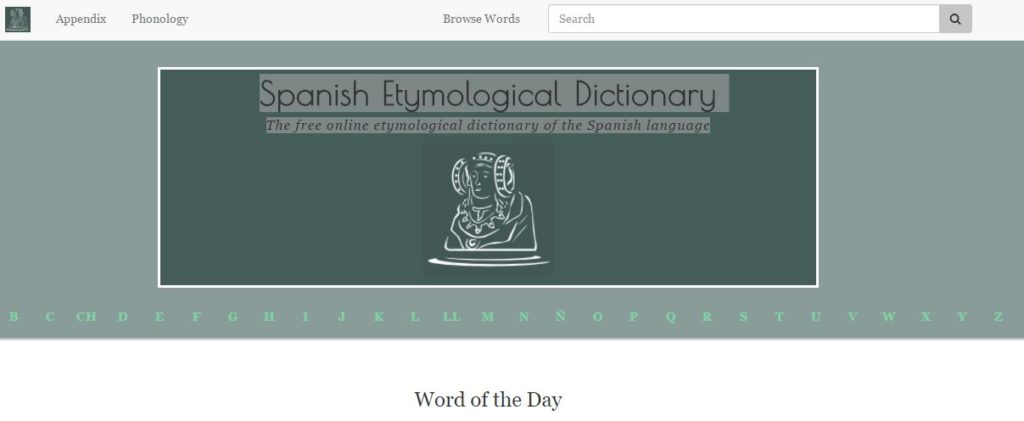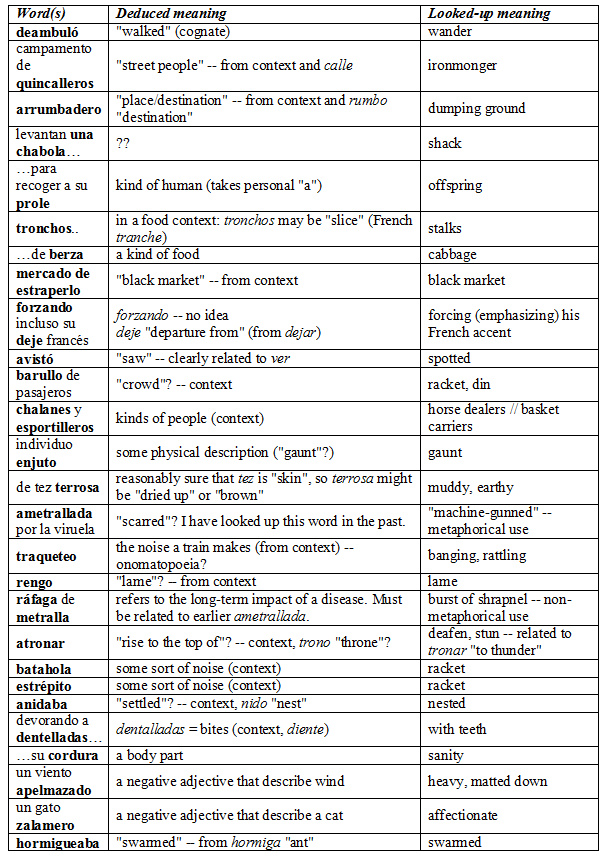Writing Sunday’s post about unfamiliar vocabulary in El séptimo velo, and in particular the words metralla and ametrrallada, started me thinking somewhat nostalgically about Spanish vocabulary I’ve found hard to learn, and what strategies have worked for me. In general, since I’m an analytic thinker, especially when it comes to language, I have trouble with words that I can’t tackle using cognates or other types of linguistic analysis. Strangely, the best solution for me in such cases is often anti-analytic. I specialize in truly ad hoc mnemonics, often based on false cognates (so-called amigos falsos). The more far-fetched, the better.
Some kinship terms beyond the basics caused me a headache “back in the day”. Sobrino and sobrina “nephew/niece”, for instance, lack an English cognate. My ad hoc mnemonic for them is therefore based on a false cognate: I think of a “sober” (i.e. non-drinking) nephew. Nieto and nieta “grandchild” are cognate with “nephew”, unfortunately; we owe to French the perversion of the original Latin meaning, which Spanish has preserved. My solution, then, is to picture a “nice” grandchild.
In-law terms were a mixed bag for me. Suegro and suegra “parents-in-law” came easily. These are ugly words — they sound like sweat or suet — which I have always found reminiscent of the negative stereotype of these relatives, especially mothers-in-law. (My own mother-in-law is an exception, thank goodness.) I had more trouble with other in-law terms. I finally mastered cuñado/cuñada “brother/sister-in-law” after learning the word cuna “cradle”, since one might visit one’s sister-in-law to admire her baby. My mnemonics for yerno and nuera “son/daughter-in-law” are truly bizarre. To me these sound like terms one might associate with animal husbandry, like yearling or nursling. And the propagation of the family line is, after all, the point of acquiring these relations.
Going back to metralla and ametrrallada, I’ve been seeing the word ametralladora “machine gun” for years without managing to remember it. I think the noun’s ending was playing with my analytic brain. The noun suffix –or or -ora usually connotes a person or object that produces something. A tostador (or tostadora) makes toast. An escritor creates written work. An aspirador creates suction. But an ametralladora doesn’t make anything; it just kills.
Had I looked up the word’s etymology, as I finally did on Sunday, I would have known that metralla means shrapnel. Now I will always remember the word, because an ametralladora produces metralla. I guess the moral here is that one should always research etymology when dealing with a stubborn word.
My current struggle is with a substantial class of action verbs beginning with de- or des-, including derrotar, derretirse, derrumbar, deslizar, and desmoronar. These all have negative meanings: defeat, melt, demolish, slide (this can be negative if you’re on a cliff), and collapse. I have trouble with these words because I encountered all of them at about the same time, when I started teaching Spanish and began working on my language skills seriously again. I think of this as the geshem/shemesh problem. These two words mean “snow” and “rain” in Hebrew (or is it “sun” and “rain”?), but because I learned them together, I can never remember which is which.
The solution for the de(s)- set seems to be continued vigorous reading. Each time I see one of these words in context it becomes a little more distinct. Maybe in the not-to-distant future I’ll be ready to use them in conversation. Then I can go on to the next hurdle! There is always more to learn.


